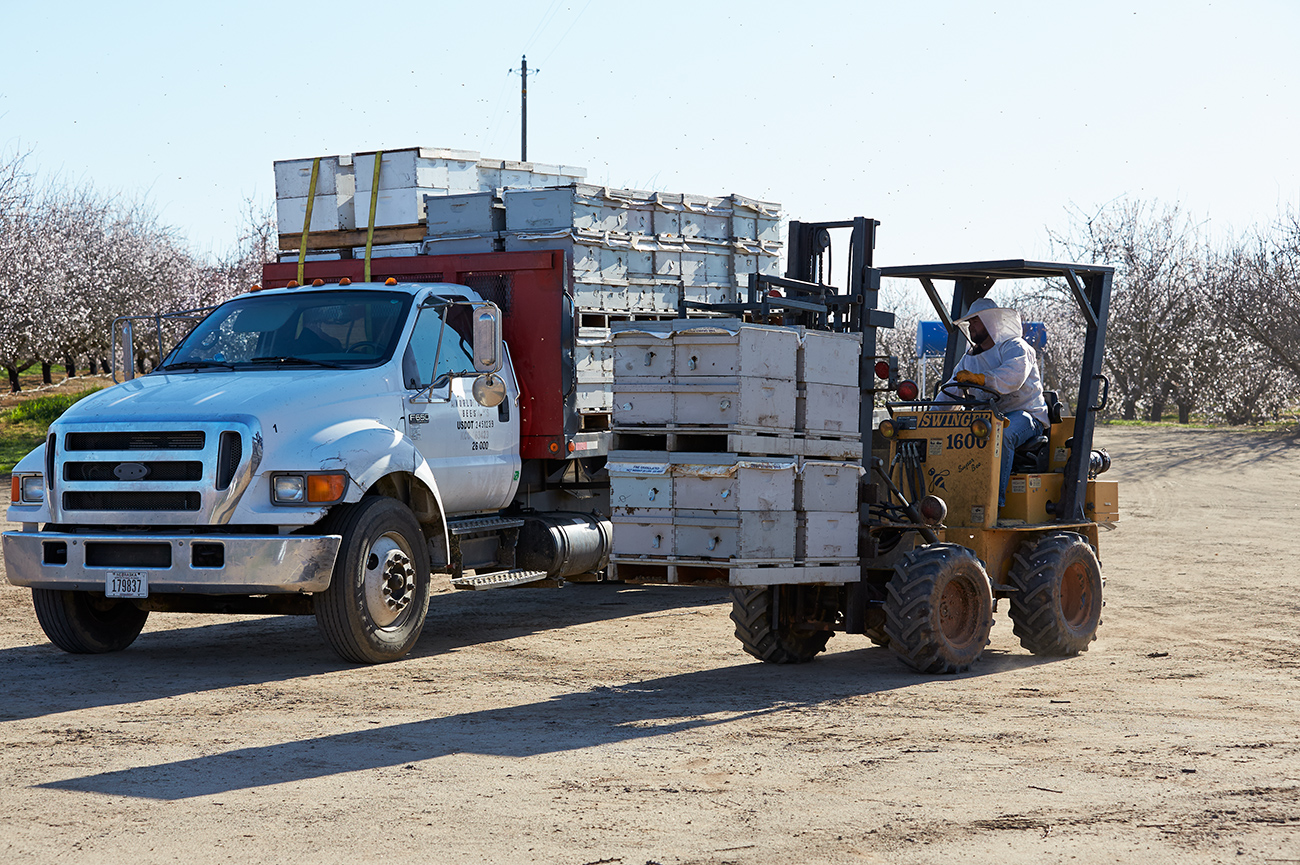Everyone involved in almond production appreciates the importance of honey bees. During almond bloom, 60% of the nation’s honey bees are imported to California to pollinate the crop. The last thing any grower, Pest Control Adviser (PCA) or hive owner wants is for those critical bees to be endangered by any pest control application.
 Enter the BeeWhere program, formed in 2017 by a coalition of stakeholders, led by the California Association of Pest Control Advisers (CAPCA) and County Agricultural Commissioners and Sealers Association (CACASA).
Enter the BeeWhere program, formed in 2017 by a coalition of stakeholders, led by the California Association of Pest Control Advisers (CAPCA) and County Agricultural Commissioners and Sealers Association (CACASA).
BeeWhere streamlines communication between beekeepers, PCAs, growers and pesticide applicators using modern technology. It employs web-based mapping tools that allow all parties to identify any hives within a mile of where a crop management pesticide is being applied.
And beginning this month, a new mobile app will make tracking even easier: Growers and other pollination stakeholders can download the free BeeCheck app at the Google store as well as the Apple store.
“BeeWhere is really a way that beekeepers can meet the legal requirement to register their hives and a PCA can know where those hives are before spraying,” said Josette Lewis, director of Agricultural Affairs for the Almond Board of California (ABC), which provides funding for BeeWhere.
Before BeeWhere, growers and PCAs would have to drive to their local county ag commissioner’s office to find where hives were located. Today, that information is available on their smart phones or computer tablets with a few keystrokes.
“It’s very easy and convenient,” Lewis said.
Safeguarding hives is among the Honey Bee Best Management Practices (Honey Bee BMPs) developed by the Almond Board. Growers are encouraged to review the information in the BMPs and apply the necessary practice in their orchards leading up to and during bloom.
Lewis said 50% or more of the hives imported to California before the almond bloom will be in the state by the end of fall or early winter. When they arrive, beekeepers are legally obligated to register their hives and then update their location within 72 hours of any move.
Registration can be done through the BeeWhere website. At the same site, PCAs and pesticide applicators can quickly access hive locations and contact information for their owners in order to give the required 48-hour notification before any spraying occurs.


